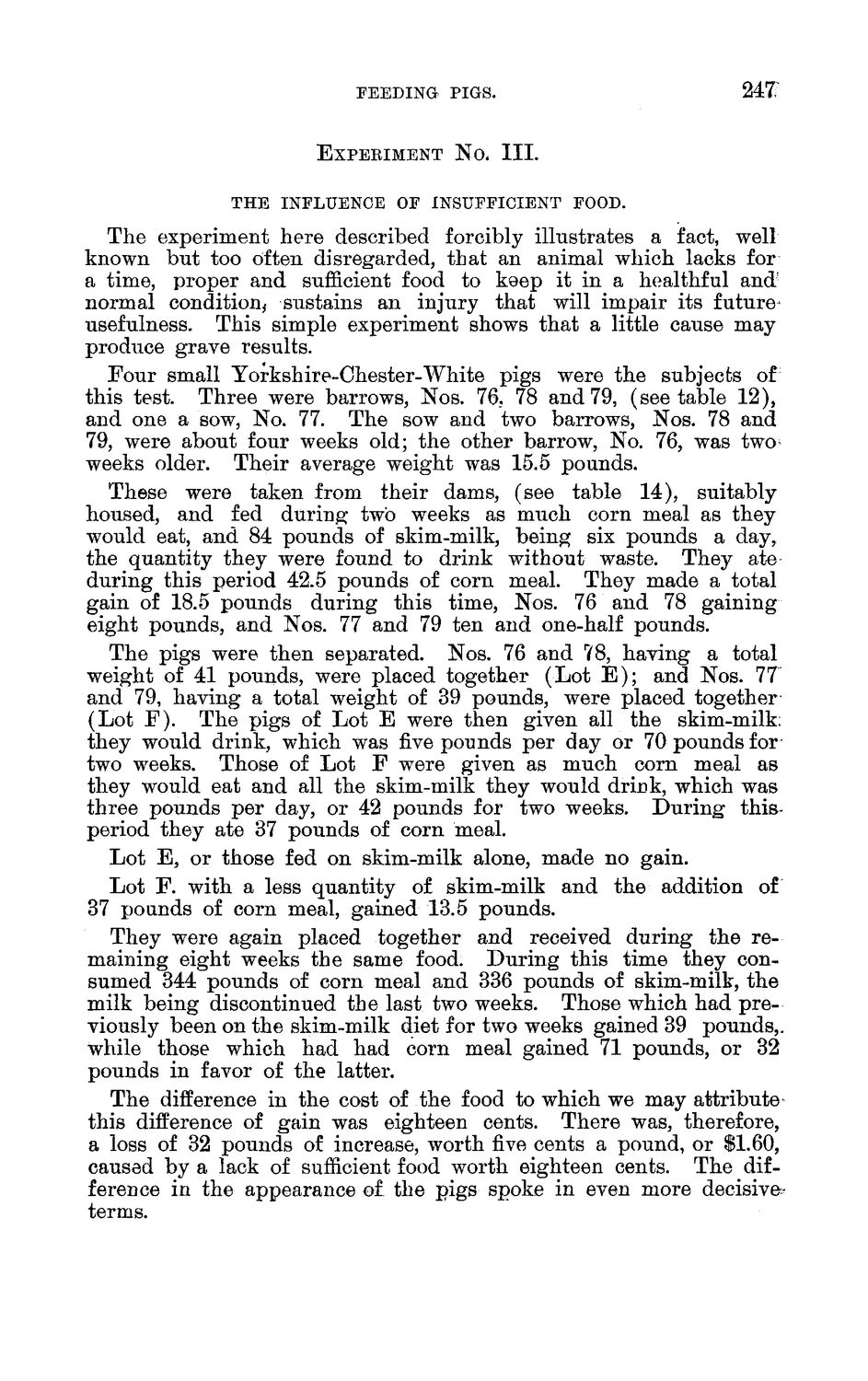| |
| |
Caption: Board of Trustees Minutes - 1888
This is a reduced-resolution page image for fast online browsing.

EXTRACTED TEXT FROM PAGE:
FEEDING PIGS. 247? III. EXPERIMENT NO, THE INFLUENCE OF INSUFFICIENT FOOD. The experiment here described forcibly illustrates a fact, well known but too often disregarded, that an animal which lacks for a time, proper and sufficient food to keep it in a healthful and: normal condition, sustains an injury that will impair its future usefulness. This simple experiment shows that a little cause may produce grave results. Four small Yorkshire-Chester-White pigs were the subjects of this test. Three were barrows, Nos. 76. 78 and 79, (see table 12), and one a sow, No. 77. The sow and two barrows, Nos. 78 and 79, were about four weeks old; the other barrow, No. 76, was two* weeks older. Their average weight was 15.5 pounds. These were taken from their dams, (see table 14), suitably housed, and fed during two weeks as much corn meal as they wTould eat, and 84 pounds of skim-milk, being six pounds a day, the quantity they were found to drink without waste. They ate during this period 42.5 pounds of corn meal. They made a total gain of 18.5 pounds during this time, Nos. 76 and 78 gaining eight pounds, and Nos. 77 and 79 ten and one-half pounds. The pigs were then separated. Nos. 76 and 78, having a total weight of 41 pounds, were placed together (Lot E ) ; and Nos. 77 and 79, having a total weight of 39 pounds, were placed together (Lot F). The pigs of Lot E were then given all the skim-milk; they would drink, which was five pounds per day or 70 pounds for two weeks. Those of Lot F were given as much corn meal as they would eat and all the skim-milk they would drink, which was three pounds per day, or 42 pounds for two weeks. During thisperiod they ate 37 pounds of corn meal. Lot E, or those fed on skim-milk alone, made no gain. Lot F. with a less quantity of skim-milk and the addition of 37 pounds of corn meal, gained 13.5 pounds. They were again placed together and received during the remaining eight weeks the same food. During this time they consumed 344 pounds of corn meal and 336 pounds of skim-milk, the milk being discontinued the last two weeks. Those which had previously been on the skim-milk diet for two weeks gained 39 pounds,, while those which had had corn meal gained 71 pounds, or 32 pounds in favor of the latter. The difference in the cost of the food to which we may attribute this difference of gain was eighteen cents. There was, therefore, a loss of 32 pounds of increase, worth five cents a pound, or $1.60, caused by a lack of sufficient food worth eighteen cents. The difference in the appearance of the pigs spoke in even more decisiveterms.
| |